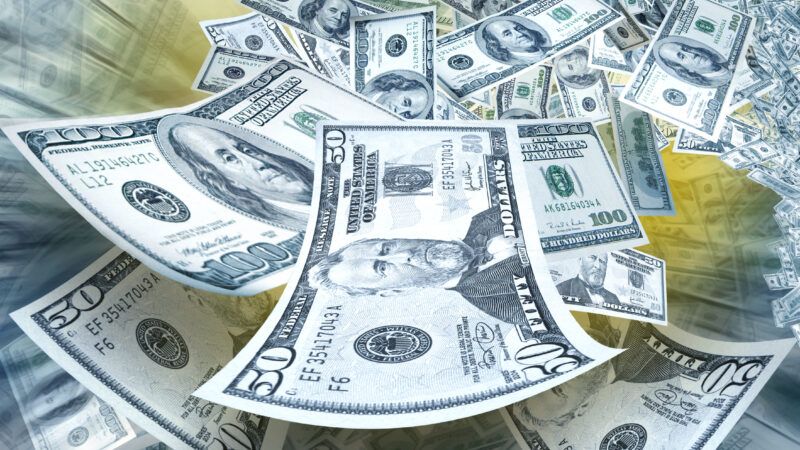California Plows Ahead With Providing Free Money To Mitigate Inflation
The state's $9.5 billion Better for Families program will provide checks of up to $1,050 to state residents to stem the rising costs of living.

California's state government is plowing ahead with its plan of sending free money to people to mitigate the pain of inflation.
On Tuesday, state Sen. Nancy Skinner (D–Berkeley) tweeted a reminder that in October, California residents who filed a tax return in 2020 should start seeing checks appear in their mailboxes courtesy of the Better for Families tax refund program.
Folks,
Beginning in early October, most California residents will start receiving cash refunds to help respond to the higher costs caused by inflation.
Find out more about the Better for Families tax refund program:https://t.co/Hd1VRDF5JP pic.twitter.com/fIYBGZTrOJ
— Nancy Skinner (@NancySkinnerCA) September 13, 2022
The rough sketches of the program were announced in late June as part of the budget deal reached between Gov. Gavin Newsom, a Democrat, and state legislative leaders.
The $9.5 billion program will provide checks of up to $1,050 depending on one's income, filing status, and number of dependents. Single-filers earning more than $250,000 (or joint filers earning more than $500,000) aren't eligible for the checks.
Much like the Inflation Reduction Act passed by the U.S. Congress last month, these tax refunds will likely exacerbate the problem they're trying to mitigate.
The program puts cash in the hands of low- and middle-income consumers with a higher marginal propensity to consume. That's a fancy way of saying they're more likely to spend this money instead of saving or investing it. That's particularly true in an inflationary environment where prices are rising fast.
And boosting statewide demand will boost prices.
There's already evidence of federal checks-for-all have increased inflation. The $1.9 trillion American Rescue Plan, passed in March 2021, which included $1,400 stimulus checks, is estimated by one Federal Reserve Bank of San Francisco analysis to have raised inflation by three percentage points.
It's important to point out that the state is issuing these tax refunds because it sort of has to. A convoluted budget mechanism known as the Gann Limit requires the California state government to return budget surpluses to taxpayers or spend them on a few budget categories like infrastructure and education.
One libertarian argument would be that, given the Gann Limit, it's better to return that money to taxpayers than let state bureaucracies spend it on public works and public programs.
That's a fair enough perspective. It's complicated by the fact that the state is mostly flush with revenue because of higher-than-expected tax returns from high-income earners. Many of those high-income earners either won't qualify for the Better for Families program. The Better for Families program is therefore an income redistribution program. For many recipients, their payout might exceed their state tax burden.
Leaving money to state bureaucracies to spend, which has obvious libertarian drawbacks, would probably be better for inflation. Those bureaucracies would be slower to spend the money and thus less prone to boosting demand.
Better yet, California's politicians could return the state's budget surplus to the high-income earners who funded it. That would be fairer. It would also be less likely to increase inflation because higher income earners have a lower marginal propensity to consume.
That's not what state politicians did. The state's consumers will now reap the consequences.
Rent Free is a weekly newsletter from Christian Britschgi on urbanism and the fight for less regulation, more housing, more property rights, and more freedom in America's cities.


Show Comments (83)